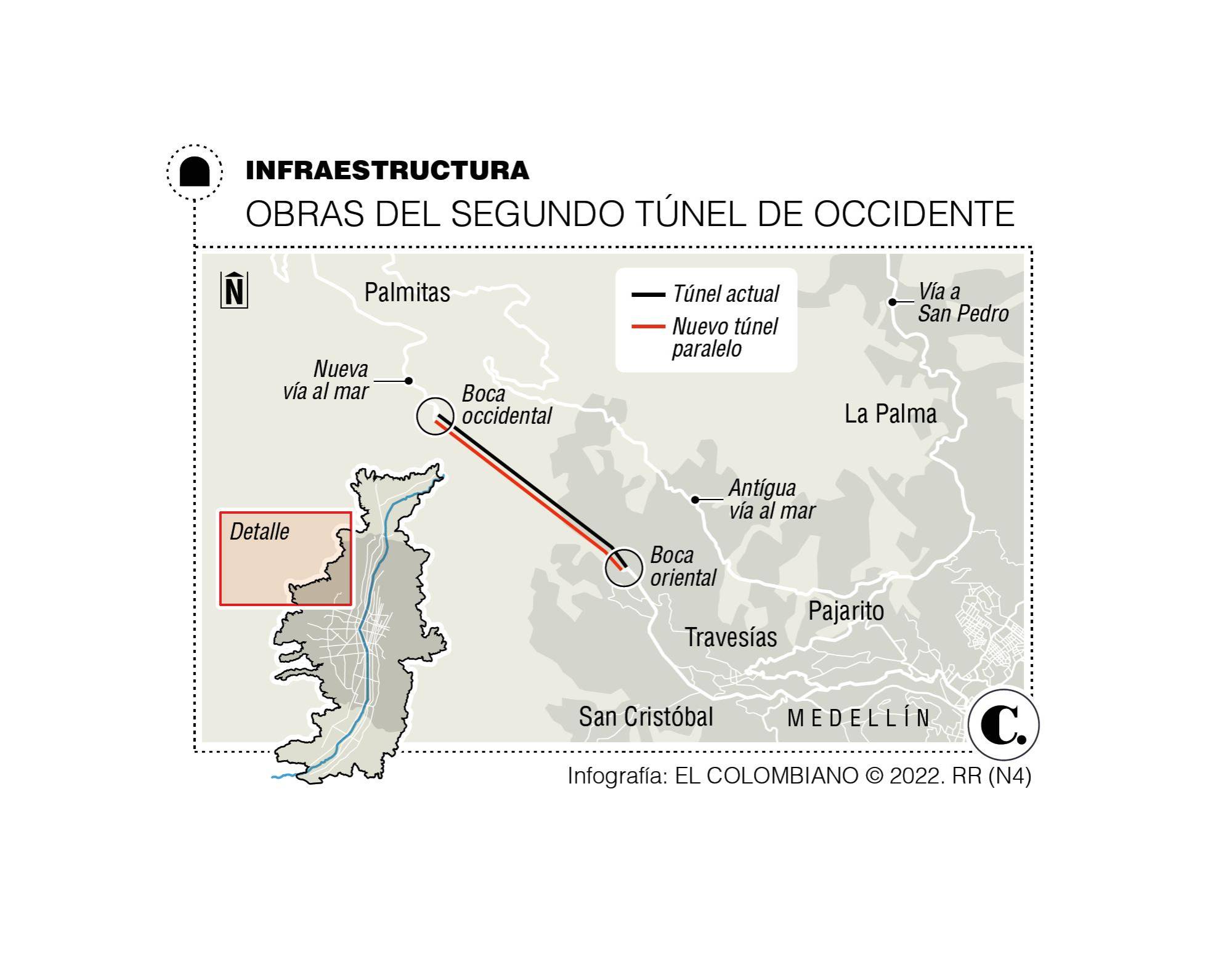with a parade of 14 classic cars were put into service yesterday in the second western tunnel, another engineering mega-work that is part of the 4G Autopista al Mar 1 project and that has already been delivered in its entirety, with a cost of $2.8 billion and five years of execution.
The first to pass was Óscar Ospina, driver of a convertible tractor that led the caravan. He crossed at 2:46 pm and left through the other mouth at 3:02 pm and they were the happiest 16 minutes of his life behind the wheel, he said: “My heart wrinkled knowing that I would be the first to pass for this great and wonderful work. I did not imagine that he was going to be a pioneer, these are things that come”, he expressed moments before entering the tunnel, when they told him that his “tractor truck”, as he baptized his truck, would lead the caravan.
and although it took 16 minutes to cross the 4.6 km measured by the infrastructure, this will not be common, since it was an inaugural act and it was shot very slowly, as there were dozens of vehicles of guests, officials and the media who came to witness this new milestone of the Antioquia miracle, which includes 8 4G highways that build in the apartment.
Between whistles and flags
Warm and effusive, as the people of Antioquia are, was the premiere of this tunnel, which surprised by its infrastructure and interior beauty, fully illuminated, with white side walls and impeccable signage. It will travel the route between the Aburrá Valley and the West in the direction of Santa Fe de Antioquia – Medellín.
“Not only do congestions end, is a saving in time of between 35 and 40 minutes, a The vehicle is going to come from 80th Avenue straight onto the dual carriageway and the same thing will happen the other way around,” stressed Santiago Eráns Piqueras, manager of the Devimar consortium, which built the project.
The caravan was colored by whistles, smiles of joy from drivers and companions who came out of the windows of the vehicles; on the sides, rows of people, including employees of the ANI (National Infrastructure Agency), Devimar and the Government, waving flags from Antioquia on one side and Colombian flags on the other. “This is an unforgettable experience, a hundred years will be talked about this work, I feel very proud of Antioquia”, commented Mauricio Vargas, another of the first to cross with his vehicle.
The new tunnel includes nine galleries that connect with the old tunnel (opened in 2006), 3 of them for vehicles and 6 for pedestrians. They will be used only in cases of emergency and the function will be to evacuate people and cars, “all this infrastructure It will allow passengers to drive safely, comfortably and efficiently.” Erans Piqueras insisted.
But the desire to cross was dammed in the usual users of the route, because almost an hour before the flag was lowered that put the “traffic light” green to pass, there was already a line of buses, trucks, tractor trailers, dump trucks, motorcycles and private vehicles waiting to join the caravan. They did so, and at 3:05 in the afternoon, all the usual vehicle fleet on the road was already crossing normally: buses from Sotraurabá and Gómez Hernández with passengers leaning out of the windows and some applauding.
It was five years of execution, a peak of 5,000 employees working and 500,000 m3 of earth removed in the single tunnel to consider the Mar 1 project completed and delivered to service, which includes the dual carriageway Medellín – Santa Fe (33 km), the rehabilitation of the Santa Fe – Bolombolo section (76 km) and the operation and maintenance of the route Santa Fe – Canasgordas (67 km). The miracle of Antioquia continues to cross mountains to bring us closer to the future, which is in the ports of Urabá. And this milestone is vital to that dream.
60
kilometers will continue to be the speed allowed inside the tunnels.

